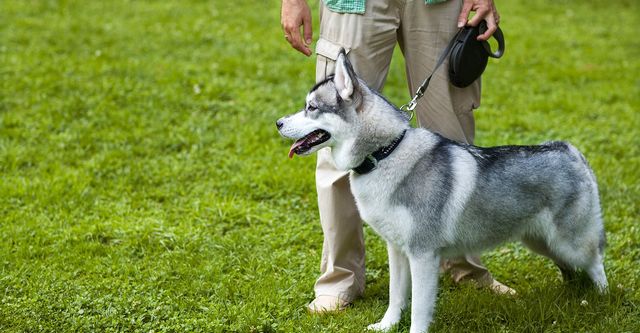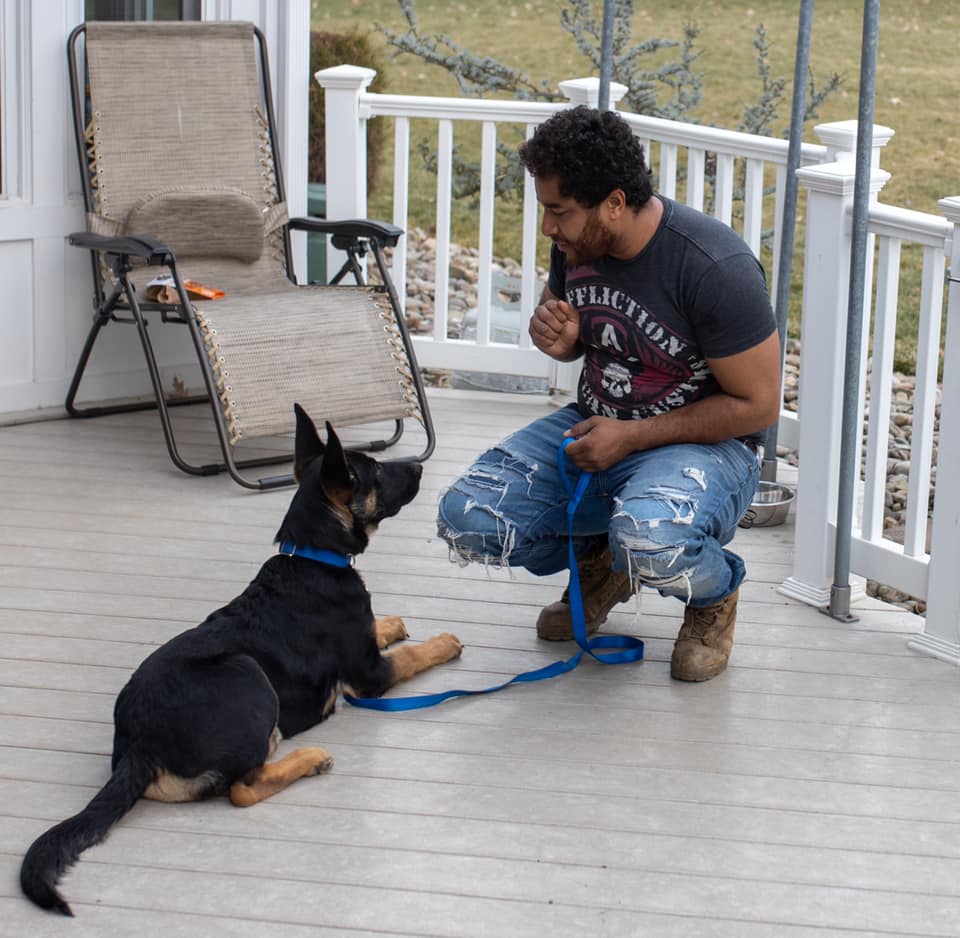FAQs About Dog Training Near Me Every Owner Should Know
Reliable Methods for Effective Dog Training: A Comprehensive Overview
Efficient canine training needs a nuanced understanding of canine behavior. It depends upon the concepts of positive reinforcement and uniformity. Trainers need to acknowledge the significance of necessary commands and socializing. Addressing usual behavioral issues can change a pet dog's personality. As the bond in between proprietor and pet strengthens, the method they interact evolves. The trip of successful training encompasses different strategies that might stun also experienced pet owners. What are the key components that can make a significant distinction?
Recognizing Canine Habits
Comprehending canine actions is important for effective dog training, as it allows trainers to analyze a pet dog's actions and reactions in numerous scenarios. Pet dogs interact largely through body language, articulations, and faces. Acknowledging signs of aggression, anxiety, or fear can assist fitness instructors change their methods to guarantee a favorable training experience. A wagging tail does not always suggest happiness; the context and various other body cues should be thought about.
Furthermore, recognizing a canine's breed-specific attributes can use understandings into their behavior patterns and reactions. Socialization plays a vital function in shaping a pet's reactions to brand-new people and atmospheres. Observing a pet's play style can additionally reveal their temperament and comfort degrees. By carefully examining these behaviors, fitness instructors can create tailored techniques that promote understanding and strengthen the bond between pet dog and proprietor, inevitably leading to more effective training outcomes.
The Importance of Positive Support
Positive support is a key strategy in dog training that boosts the learning procedure by fulfilling wanted habits. This method urges pets to repeat activities that yield favorable end results, such as deals with, praise, or playtime (Dog Training Near Me). By linking etiquette with rewards, canines come to be much more inspired and involved during training sessions

Including favorable reinforcement into training routines can result in quicker discovering and far better retention of commands. It promotes a cheerful environment that boosts both the dog's experience and the trainer's fulfillment, making it a basic element of effective dog training.
Essential Commands Every Canine Should Know

Developing a Constant Training Schedule
Developing a regular training routine is important for reliable pet training, as it aids strengthen knowing and produces a feeling of regular for the dog. A structured method allows both the instructor and the dog to anticipate training sessions, which can boost focus and engagement. Preferably, training sessions ought to be short, long lasting between 5 to 15 mins, to maintain the pet dog's interest and interest.
Incorporating training into day-to-day activities, such as nourishment or strolls, can likewise advertise consistency. This assimilation helps pets connect training with favorable experiences. It is necessary for fitness instructors to stay versatile; unexpected occasions may demand modifications to the timetable.
Furthermore, rep is essential. Routine practice of commands and habits solidifies learning and develops self-confidence. By sticking to a constant timetable, trainers can assure that their canines create good routines and respond dependably to commands, preparing for reliable training outcomes.
Socializing: Trick to a Well-Adjusted Dog
Socialization is vital for a pet's growth, influencing their actions and interactions with people and other pets. Very early exposure to numerous atmospheres, appears, and experiences can significantly improve a pet's flexibility and self-confidence. Employing effective socializing techniques can assist ensure a well-adjusted canine buddy.
Significance of Very Early Socializing

Strategies for Effective Socializing
While numerous dog owners identify the value of socialization, comprehending efficient methods to promote this procedure is essential for fostering a well-adjusted pet. Gradual exposure to diverse environments, individuals, and other pets can substantially boost a dog's comfort degree in different circumstances. Favorable support plays a crucial function; satisfying preferred habits encourages dogs to come close to brand-new experiences with confidence. Structured playdates with well-mannered pets help develop social abilities and alleviate worry actions. Enrolling in obedience classes can also provide regulated environments for socialization. Preserving a tranquil attitude as an owner strengthens the canine's feeling of safety and security, permitting for even more effective interactions. These strategies jointly contribute to a adaptable and well balanced canine companion.
Taking Care Of Common Behavioral Issues
Managing More about the author common behavioral concerns is vital for maintaining an unified useful link partnership in between pet dogs and their proprietors. Key difficulties such as aggressiveness, excessive barking, and jumping behavior need targeted strategies to handle successfully. Recognizing the origin of these actions can bring about effective interventions and an extra well balanced canine friend.
Resolving Aggressiveness Issues
Aggression in dogs can materialize in numerous forms, posing difficulties for proprietors and instructors alike. Addressing these issues necessitates a thorough understanding of the underlying causes, which may include fear, resource, or territoriality protecting. Determining triggers is vital; owners need to observe their pet's body movement and habits to pinpoint specific situations that prompt hostility. Positive support strategies can properly customize hostile habits, gratifying calm feedbacks to determined triggers. Uniformity is essential, and proprietors have to stay client throughout the training procedure. Sometimes, expert guidance from a qualified dog instructor or behaviorist may be required, especially for extreme hostility. Ultimately, the objective is to develop a risk-free setting for both the canine and those around it.
Managing Too Much Barking
Too much barking can be a substantial annoyance for dog proprietors and next-door neighbors alike, often indicating underlying concerns that need resolving. Determining the triggers behind the barking is necessary; these may include monotony, anxiousness, or a feedback to external stimuli. Owners should observe their dog's habits and atmosphere to pinpoint the reason. Dog Training Near Me. Applying consistent training methods, such as favorable reinforcement, can effectively minimize barking. Educating commands like "quiet" or rerouting the canine's interest right now of barking can be advantageous. In addition, providing appropriate physical and psychological excitement with workouts and interactive playthings can alleviate boredom-related barking. In some situations, speaking with an expert trainer or behaviorist might be essential this link to develop tailored techniques that resolve consistent barking worries
Lowering Leaping Actions
Numerous pet dogs display jumping actions, often as a way of expressing excitement or seeking interest from their visitors and owners. This actions can be problematic, particularly when it leads to unintentional injuries or pain for guests. To reduce jumping, proprietors need to initially stay tranquil and prevent awarding the behavior with attention, as this can reinforce it. Rather, they can show a different actions, such as resting, by awarding the pet for remaining calm when somebody techniques. Consistency is key; all member of the family must apply the same rules. In addition, training sessions must consist of diversions to aid the pet dog learn to control their impulses. With time, with persistence and determination, jumping can be significantly reduced, leading to an extra pleasurable atmosphere.
Building a Strong Bond Through Training
Although educating a canine often focuses on commands and actions, it also serves as a crucial chance to reinforce the bond between the pet dog and its owner. Engaging in training sessions fosters communication, good understanding, and trust fund. When owners spend time in teaching their dogs, they show dedication, which aids the canine feel safe and valued. Favorable reinforcement methods, such as deals with and praise, not just urge wanted habits yet likewise strengthen the psychological link between the pet and proprietor.
Furthermore, consistency in training builds a sense of dependability, enabling pet dogs to comprehend their role within the house. Each successful command boosts the pet's self-confidence, leading to a deeper relationship. Regular training sessions can become satisfying bonding experiences, full of playfulness and communication - Dog Training Near Me. Eventually, the process of training goes beyond mere obedience, developing a partnership that enriches the lives of both the pet and its proprietor
Frequently Asked Inquiries
What Age Is Ideal to Beginning Educating a Young Puppy?
The most effective age to begin educating a pup is generally between 8 to 12 weeks. At this stage, young puppies are most receptive to finding out, making it a suitable time for fundamental training and socialization.
How Long Should Each Educating Session Last?
The suitable duration for each and every dog training session generally varies from 5 to 15 mins, depending upon the dog's age and focus span. Short, focused sessions enhance finding out and retention, making training extra delightful and effective.
Can Older Pets Still Be Educated Properly?
Older pet dogs can undoubtedly be trained effectively. With patience and consistent techniques, they can learn brand-new commands and habits. Their experience often makes them a lot more receptive to training, boosting the bond between pet dog and owner.
What Tools Do I Required for Educating?
For reliable pet dog training, important tools consists of a tough chain, a comfortable harness, high-value deals with, training remote controls, and a selection of playthings. These tools assist in communication and reinforce favorable actions throughout training sessions.
Exactly how Do I Track My Canine's Training Development?
To track a dog's training development, one can keep a journal, record milestones, and note behavior adjustments. Regular assessments, consisting of timed commands and obedience examinations, aid evaluate enhancement and determine locations needing additional focus.
Understanding canine actions is necessary for reliable pet training, as it allows fitness instructors to interpret a pet's activities and reactions in various situations. Establishing a regular training routine is essential for efficient canine training, as it assists reinforce understanding and creates a feeling of routine for the pet dog. Training a dog often concentrates on commands and behaviors, it also serves as a crucial chance to reinforce the bond in between the dog and its proprietor. When proprietors invest time in instructing their dogs, they demonstrate commitment, which assists the pet really feel safe and secure and valued. The perfect duration for each pet dog training session generally ranges from 5 to 15 mins, depending on the dog's age and attention period.